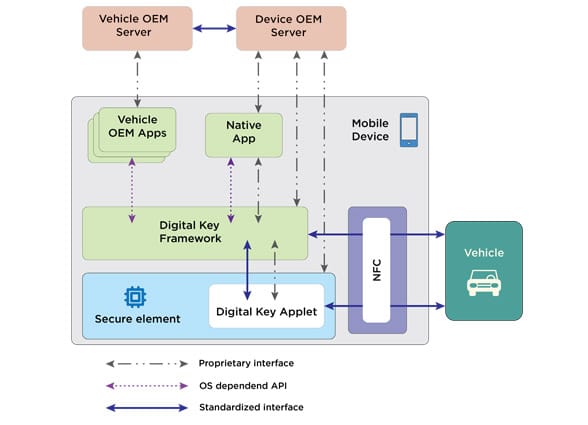
The Car Connectivity Consortium has announced the completion of an NFC-based digital key specification designed to deliver “a standardized ecosystem that enables mobile devices to store, authenticate, and share digital keys for vehicles in a secure, privacy-preserving way that works everywhere”.
Members of the consortium include vehicle manufacturers General Motors, BMW, Honda, Hyundai and Volkswagen, smartphone makers Apple and Samsung, and technology firms such as NXP and STMicroelectronics.
Digital Key Release 2.0 provides “a standardized and secure method for vehicle owners to use their own mobile device as their digital key and it supports multiple usage models,” president of the consortium Mahfuzur Rahman explains.
“It also forms the foundation for Digital Key Release 3.0 and beyond, which will add even more user-friendly features.”
Release 3.0 will extend the current release’s support for NFC to also leverage Bluetooth low energy (BLE) and ultra wideband (UWB) for communications over a longer distance.
Features supported in Release 2.0 include:
- Vehicle access, start, mobilization and more
- Owner pairing and key sharing with friends, with standard or custom entitlement profiles
- Support for mobile devices in battery low mode
“The digital key architecture uses standardized interfaces to ensure interoperability between implementations by mobile device manufacturers and vehicle manufacturers, and it uses standards-based public key infrastructure to establish end-to-end security,” the consortium adds.
“Mobile devices create and store the digital keys in secure elements that provide the highest level of protection from hardware or software-based attacks.
“The architecture is also designed to allow vehicle owners to access their vehicles without internet connectivity, while also allowing vehicle manufacturers to add features that require internet connectivity for specialized features.”
Full details of the system architecture as well as expected use cases and future technical developments are available in a white paper that the consortium has published on its website.